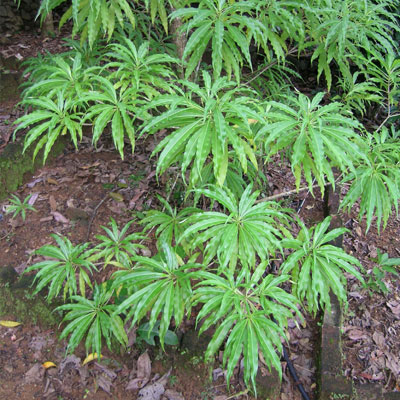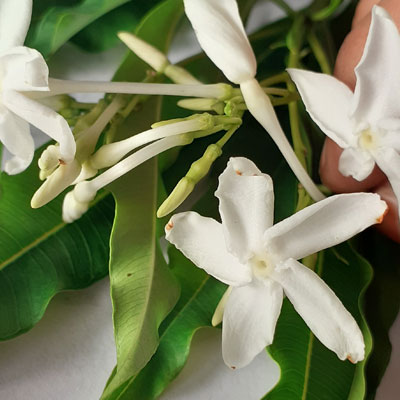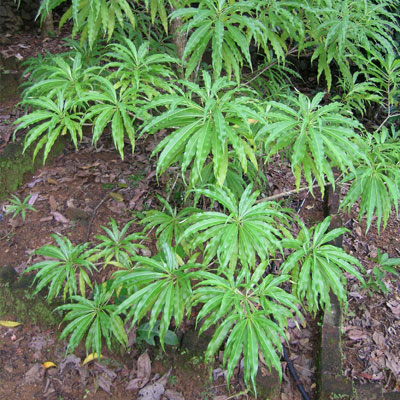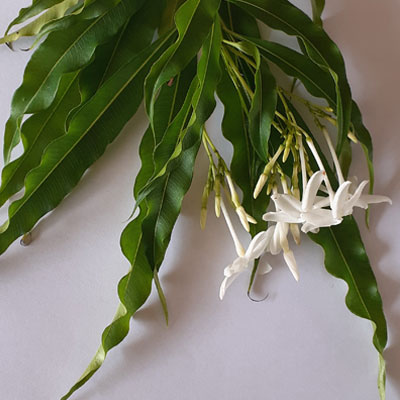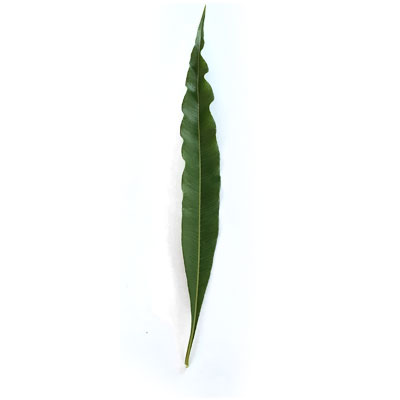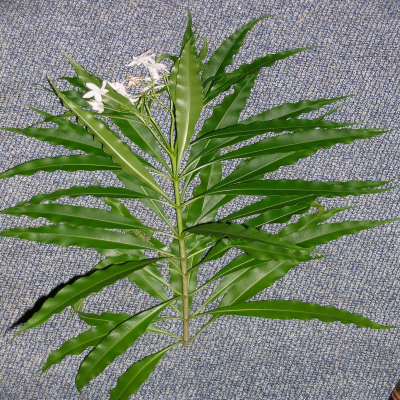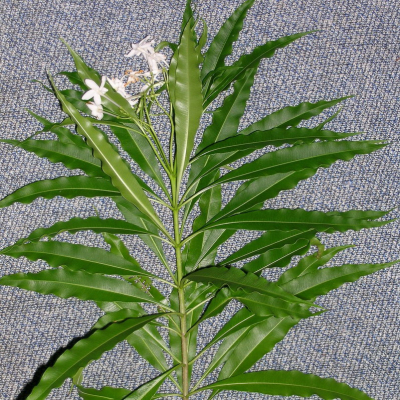Distribution and Habitat: Throughout India
Botany: Large shrub or small tree up to 6 m in height
- Leaves: Simple, arranged in whorls of 3-6, membranous, lanceolate, margins wavy
- Flowers : White, arranged in terminal sub umbellate cymes or in racemes.
Fruits : Fusiform with stalked and beaked follicles, tapering at both ends.
Seeds: Many flattened with a tuft of hair at each end.
Parts used: roots, fruits
Uses:
- Roots are useful in skin diseases, erysipelas, leprosy, cobra bite and other venomous bites, epilepsy, fatigue, fever and otalgia.
- Fruits are useful in syphilis, insanity and epilepsy.
- Alcoholic extract of the fruits showed initial activation effect on acetylcholine esterase, followed alternately by inhibition and activation of the enzyme.
Chemical constituents:
- The plant is a rich source of indole alkaloids. Alkaloids are present in various parts.
- Stem bark and root contain venenatine, alstovenine, 3-dehydroalstovenine and reserpine.
- Stem bark contains venoxidine, anhydroalstonatine, kopsinine, venalstonine, venalstoruidine, echitovenine and veneserpine.
- Fruits contain echitovenidine, (+)minovincinine, echitoserpidine, echitoserpine, echitoveniline, 11-methoxy echitovonidine, 11-methoxy (-) minovinicinine, echitoserpiline, (-)vincadifformine, 11-methoxy(-)vincadifformine and venoterpine.
- Leaves contain echitovenaldine, echitoveniline, alstolenine, deacetylakuammiline, polynuridine, dihydropolynuridine and raucaffrininoline.
- Fruits contain b-amyrin acetate and lupeol ester of b-hydroxy acid .
Agrotechnology
Propagation: By seeds and rooted thin stem cuttings. 3months old seedlings are used for transplanting.
Spacing : 3 m x 3m
Harvesting: Flowers are formed in the first year itself. It can be used for medicinal purposes after seven years of growth.

